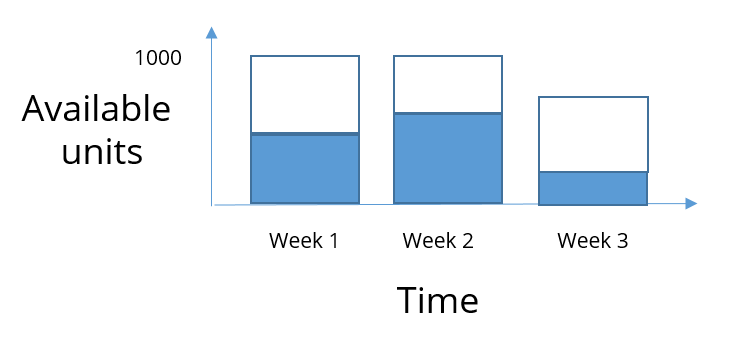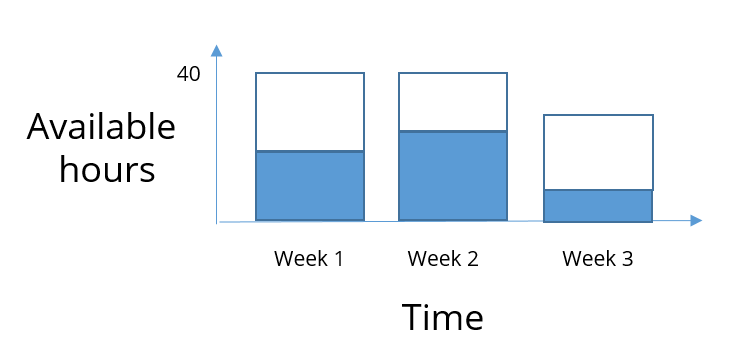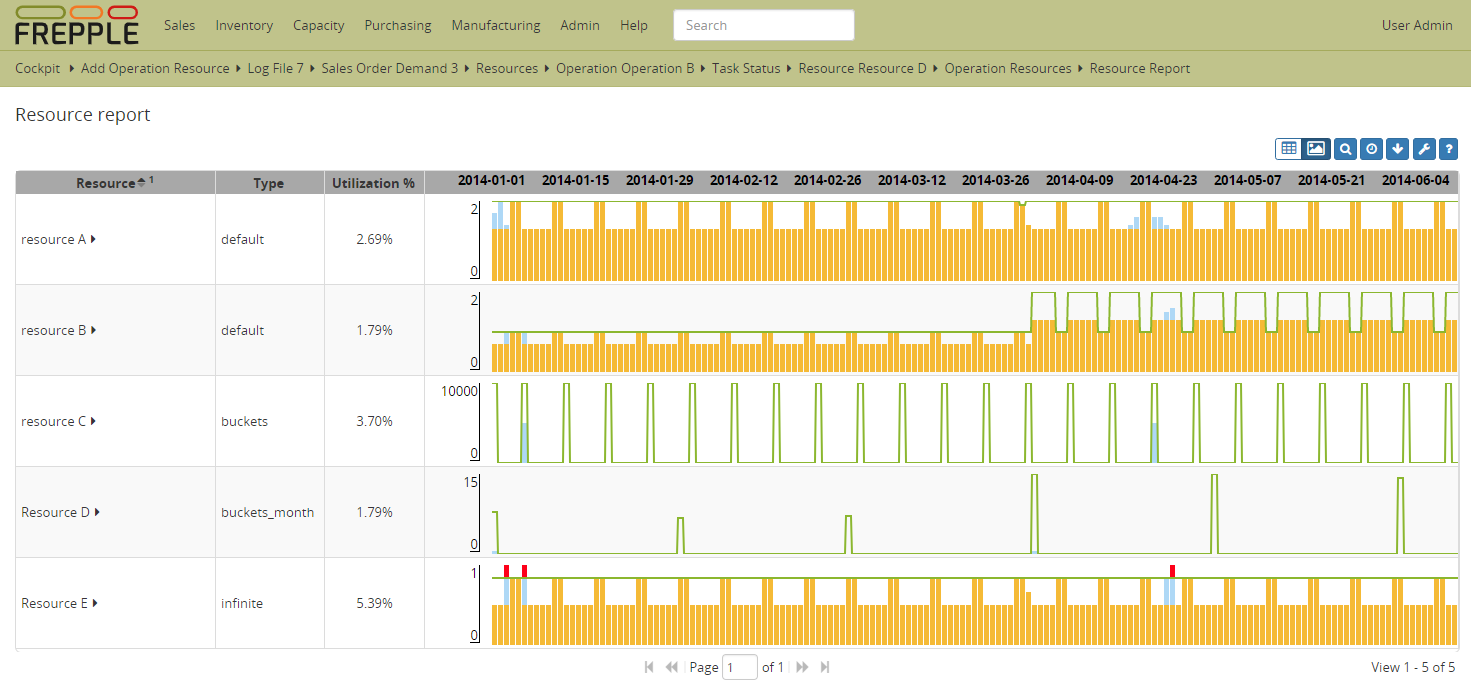Resource type
Planners can think in different ways on their capacity limits:
“We can do N jobs at a time”
“We can produce N units per week (or day, or month)”
“We have N hours available per week (or day, or month)”
FrePPLe has different resource types that represent these different views on the concept of capacity.
The default resource model has a continuous representation of capacity.
The resource size is the maximum size of the resource. The load quantity specifies how much of the resource we use during the complete duration of the operation.
This resource model is typically used for short term detailed planning and scheduling.

There is also a quantity buckets resource model where capacity is expressed as a total quantity per capacity bucket.
The maximum_calendar of the resource defines the time buckets and how much capacity (expressed in man-hours/machine-hours) is available per time bucket. Each operation consumes ‘load quantity * operation quantity’ of the resource capacity in the time bucket where it starts.
This resource model is typically used for mid term master planning.

There is also a times buckets resource model where capacity is expressed as a total available resource-hours per capacity bucket.
The available hours per capacity bucket are computed using the resource size and its availabile working hours.
This resource model is typically used for mid term master planning.

There is also a infinite resource model where capacity remains unconstrained.
Example
Check this feature on a live example
In this example there are 5 resources. The first two use the continuous model. The third is a resource with quantity buckets resource. The example also contains a time buckets resource and an infinite resource.
The first resource represents a machine of which we have two installed. The constrained plan will never allocate more than 2 jobs simultaneously on the resource. The total available capacity in a weekly time bucket is 2*7 machine-days (or machine-hours if the parameter ‘loading_time_units’ is set to ‘hours’)
The second resource is similar to the first, except that now the resource size is varying over time. Until April 1st we have 1 resource available, and after that date we have 2 available.
The third resource represent a work center that is capable of producing 10000 units per week. The plan of the resource doesn’t bother at all during which days of the week we plan the production.
The fourth and fith resource mirror the loading of the second resource. Resource D does this with monthly capacity buckets. Resource E does it in a fully unconstrained way.

